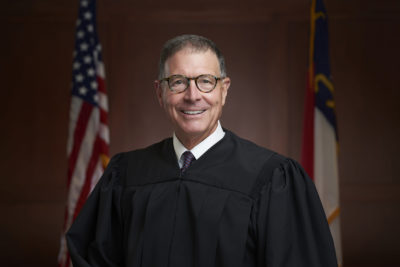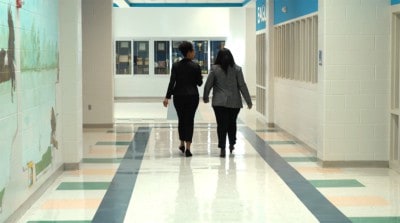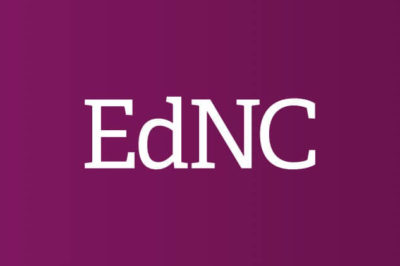
Share this story
- The State Board of Education met this week in Pembroke for its three day planning session and meeting. Members took up a number of issues, including a deep dive into a teacher licensure reform plan, which will be voted on next month.
- "If we're not willing to put money into it, it's not going to work. If we're not willing to put policy into it, it's not going to work,” said @aaronflemingnc, PEPSC co-chair, about a licensure plan set for a vote in PEPSC next week.
|
|
The State Board of Education prepared this week to consider the licensure and pay reform proposal that a state commission has been working on for the last year and half.
The Professional Educator Preparation and Standards Commission (PEPSC) has been fine-tuning a plan that would overhaul how teachers are licensed and paid in North Carolina.
Under North Carolina’s current system, teachers are paid based on their years of experience. The new proposal would introduce different levels of licensure and corresponding pay, ranging from apprentice teachers to advanced leadership roles.
PEPSC Chair Van Dempsey briefed the Board on the commission’s work. You can find that presentation here.
The Board was then briefed on what state law says about next steps by the Board’s attorney, Allison Schafer. Schafer said the proposal is currently scheduled to come before the Board at its next meeting in December “for consideration.”
During that meeting, the Board will likely make a decision on what it wants to do next with the plan.
Before the plan can actually be implemented, the General Assembly would have to act. Schafer said in an interview that the first step is for the Board to decide what exactly it wants to ask lawmakers to do.
She noted to the Board Wednesday, “The General Assembly can do whatever it wants to do. It can ignore the request. It can choose to change any of the request.”
“The General Assembly is coming back in January,” she said, “and I know that the superintendent is anxious for us to get information to the Board and to the General Assembly so that if we’re going to make progress on this we can do it in the biennium.”
Schafer reiterated, “The question is what you want to ask the General Assembly to do.”
“If you want them to implement the whole document, which includes very specific requests for very specific amounts of money, or is it something more general that goes to the General Assembly for a request that is more big ticket items,” she asked the Board.
Schafer encouraged the Board to consider the flexibility the state Department of Public Instruction and the Board might want going forward if the law is changed. She cautioned against asking the General Assembly to “implement too much detail.”
Read more about the proposal
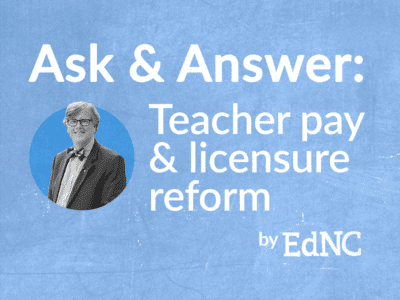
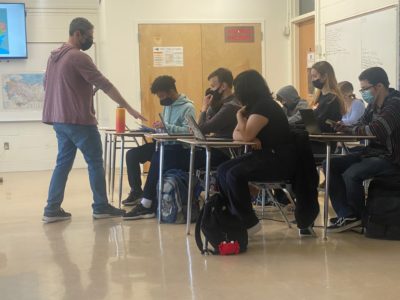

If and when the teacher licensure law is changed by the General Assembly, then PEPSC would propose rules and regulations to implement the new law and the Board would approve or disapprove the proposed rules and regulations as allowed under current state law.
For the Board’s small group discussions about the proposal Wednesday, Board Chair Eric Davis said they should consider which elements of the proposal they like and don’t like, and why. In these small groups, there was a lot of conversation about how learner outcomes are emphasized, as well as how this plan will be communicated to the public.
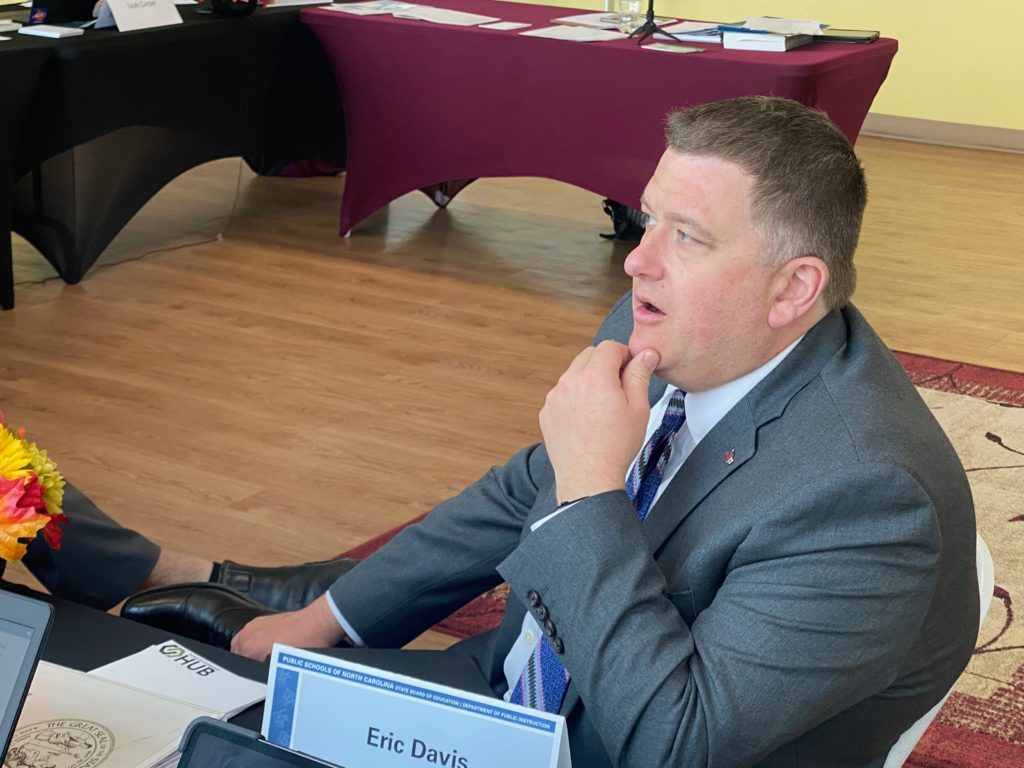
Aaron Fleming, Harnett County Schools superintendent and co-chair of PEPSC, said in a small group discussion that he is concerned about how to communicate with teachers if this proposal goes into effect.
“There’s been so much bad information shared that they’ve been scared away from this,” he said.
Other members shared this concern.
“They’re (teachers are) very stressed out,” 2022 Teacher of the Year Leah Carper said in her group. “They think it’s just going to be merit-based pay.”
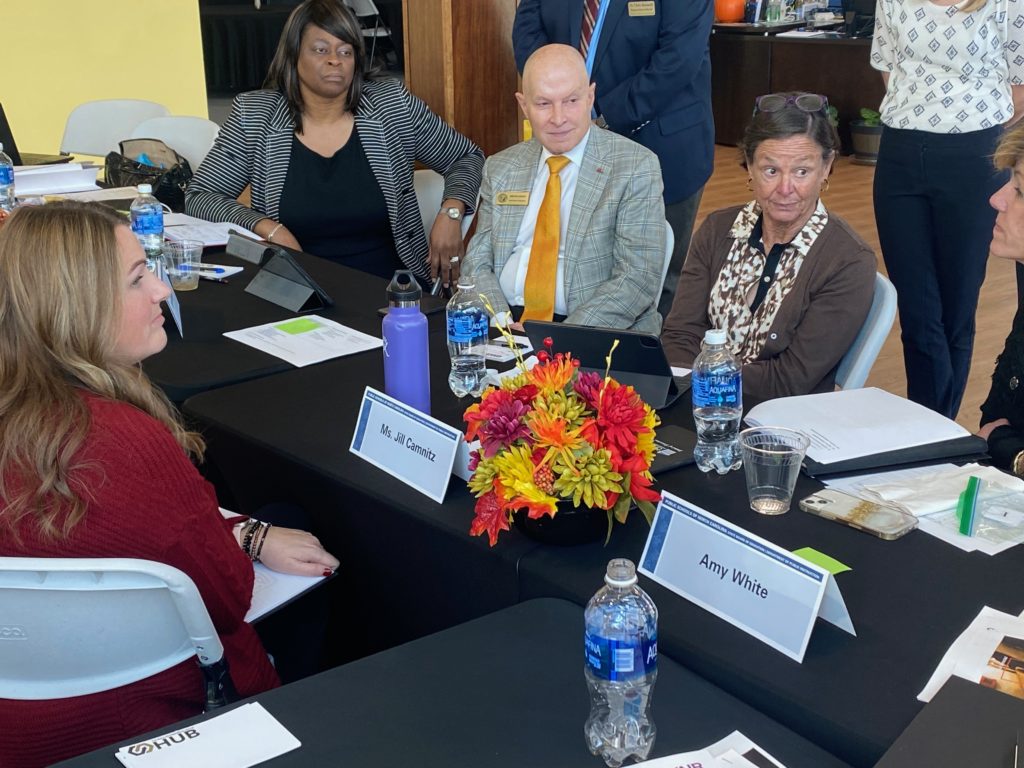
Several Board members and advisors liked that this proposal gives teachers alternative pathways to grow through their career that don’t involve going into administration.
“I really feel that if I want to remain a classroom teacher forever and ever and ever, I want to be able to do that and still take care of my family,” Eugenia Floyd, 2021 teacher of the year, said in her small group.
Superintendent Catherine Truitt said she appreciates that the proposal examines teacher autonomy in the classroom.
“Sometimes we just throw our teachers into the lion’s den and say sink or swim, because that’s how the system was created,” she said. “And you (PEPSC) have put a stake in the ground and said professionals should not enter the profession with full responsibilities without having met expectations for establishment of the practice.”
Fleming also said during a small group discussion that he is concerned about whether the Board and DPI will be able to effectively communicate with the state legislature what they want.
“If we’re not willing to put money into it, it’s not going to work. If we’re not willing to put policy into it, it’s not going to work,” he said.
The licensure discussion happened on the afternoon of the second day of the Board’s planning session, which took place in Pembroke at the University of North Carolina at Pembroke’s Thomas Entrepreneurship Hub.
Other topics tackled during the planning session included literacy and the Board’s strategic plan.
Sign up for the EdDaily to start each weekday with the top education news.
Highlights of planning session and Board meeting
Literacy
On Tuesday, the Board heard from a roundtable of educators on literacy. But it began with a lesson on learning to read the way students in school are now being taught since the state moved to reading instruction grounded in a body of research known as the science of reading.
The instructors in this case were Kelley Bendheim, the Read to Achieve implementation coordinator at DPI, and Mary Derfel, an early education consultant with DPI representing the Piedmont-Triad area of the state.

The two conducted the lesson using symbols in place of letters so as to replicate for Board members the difficulty of learning the English language from scratch. They taught them the sounds for letters, how to put them together, and even how to spell. After the initial lesson, they took a turn and asked the Board to participate in a different kind of reading instruction activity.
“The next part is what you don’t want to see happen in the classroom,” Bendheim told the Board as they were given a reading assignment made up of the symbols Board members were working with earlier.
Some of the symbols represented sounds that the Board had heard and others didn’t. The assignment was to do the reading and then report out what it was about.
Predictably, the Board had a hard time piecing together the story. Bendheim told them that was the point.
“This is also what happens with students when we say it’s independent reading time, now go read for 20 minutes,” she said, adding later: “We also wanted you to get that feeling of what it feels like to have that print in front of you and you can’t understand it.”
After the lesson, the Board heard from the panel of educators. One of them, Nicole Peterson, the pre-K-8 education director for Sampson County Schools, said she was glad the Board got a reading lesson first.
“It made them understand where the kids are at,” she said.
Ashlee Ciccone, the principal of Pinehurst Elementary School in Moore County Schools, said her school actually started aligning instruction with the science of reading before it was mandated statewide through passage of the Excellent Public Schools Act in April 2021. She was looking for a better way of teaching students and began diving into the research to see what she could find.
“Oh my goodness, there is something out there,” she said she remembered thinking.
Back in 2020, the school decided it wanted to purchase Language Essentials for Teachers of Reading and Spelling (LETRS) training, a professional development program based on some of the research. Although it was expensive, they put the money together and started training teachers and others in January 2021 because they believed it was worth it.
When reflecting on why the embrace of instruction aligned with the science of reading at her school has been so total, she said it comes down to buy-in.
“I’m blessed to work with an amazing team that is extremely empowered, and that is why this worked for us,” she said, adding that her team had to work through the training without any outside facilitators, which districts can now utilize as part of the statewide initiative. “As a team, we drug ourselves through this … We were actually in there together, drowning together.”
One of the discussions among the panel was the training that administrators get. Two versions of LETRS training are available to educators – one for teachers that takes 160 hours over two years, and an abridged version for administrators. Multiple panelists emphasized the value of having principals actually take the same training as teachers.
“The only way I’ve ever sustained change in a way that is meaningful is to be a part of a team,” Ciccone said. “It only makes me more effective If I know what they know.”
“It creates empathy, too, for the teachers,” Petersen said.
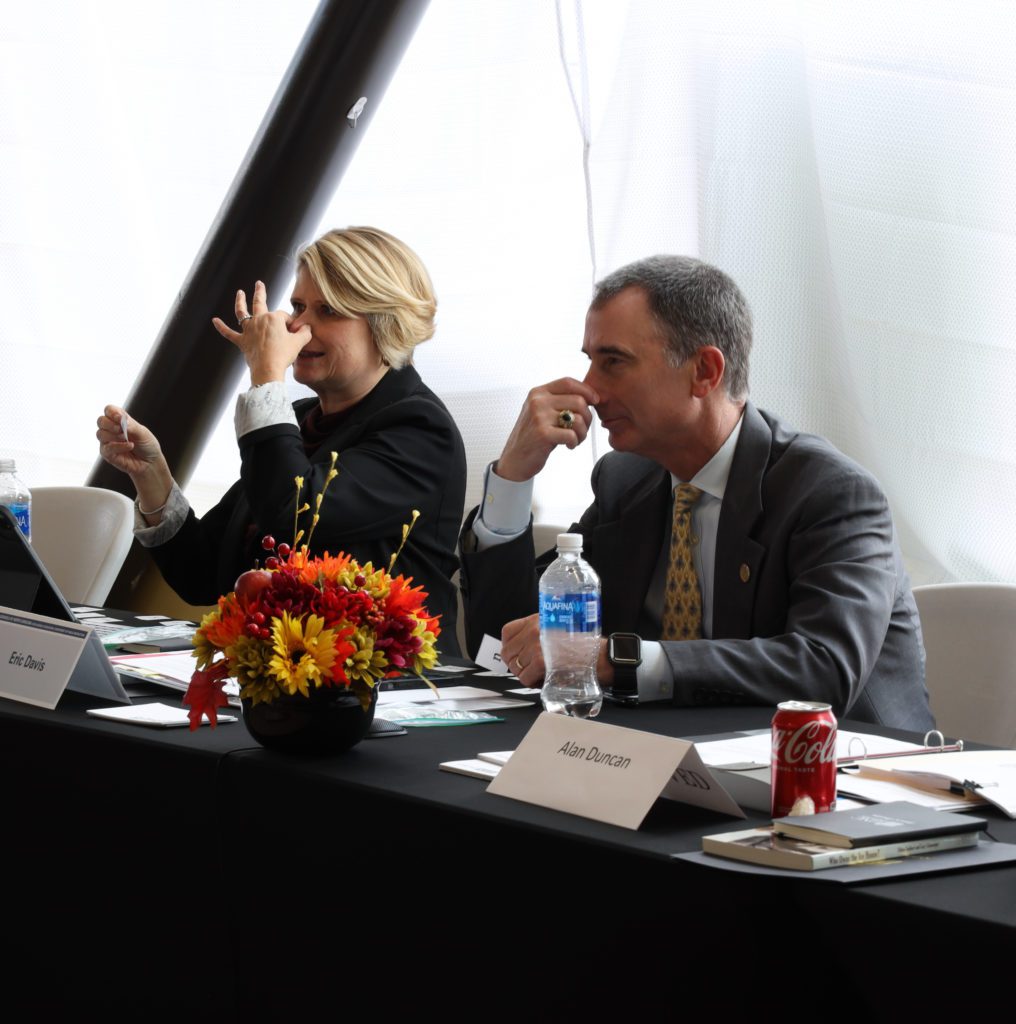
Strategic plan
On Wednesday, the Board dove deep into its strategic plan and the Strategic Monitoring Tool that is intended to compile and keep track of data crucial to the goals and objectives of the Board’s strategic plan.
Finalized in 2019 prior to the pandemic, the strategic plan and the dashboard was being considered by the Board to see how it might need to be updated or tweaked to reflect the new reality of life after COVID-19.
“Like a good plan, it’s never static,” said Board member Jill Camnitz, a chair of the committee that spearheads work on the plan. “It’s always living and breathing and growing.”
In 2019, the Board set the objectives for the plan with the intent of having them achieved by 2025.
The overarching goals of the plan are three:
- Eliminate opportunity gaps by 2025.
- Improve school and district performance by 2025.
- Increase educator preparedness to meet the needs of every student by 2025.
Within those are a variety of objectives that drill down on specific ways to achieve those goals.
See the strategic plan action framework here.
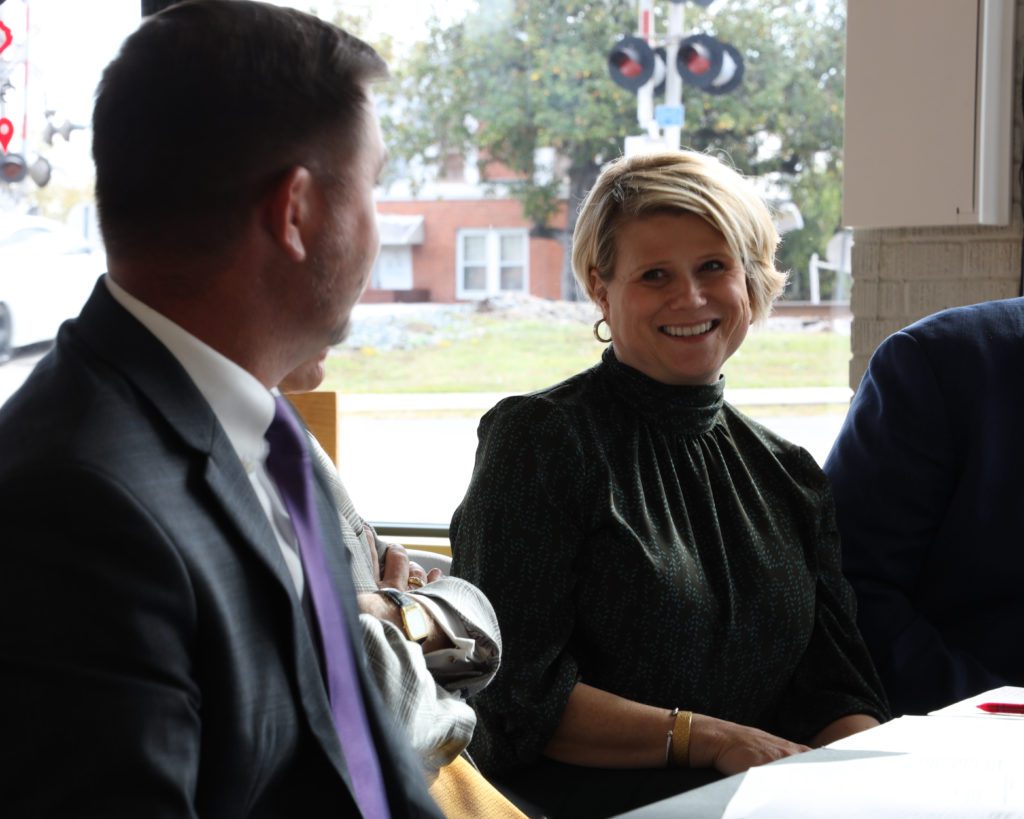
Much of the discussion revolved around what data is available for different objectives and whether the objectives might need to be re-worded to ensure they are measurable. There was also some talk about who the audience for the dashboard actually is: the Board, school districts, or other stakeholders?
The Board, DPI staff, and others broke up into small groups to discuss the different goals and objectives of the strategic plan and talk about the measurability and other aspects of the document.
Truitt talked about some of the potential issues with the plan, including the fact that there is readily available data for some objectives — such as for school nutrition — but not others.
There was extensive discussion about how the Board’s strategic plan should or could be used by districts when local boards of education are developing their own strategic plans.
“I think where it gets murky is that, of course all schools want to improve climate measures, of course all schools are working to increase the percentage of students proficient in reading. It seems like there’s been some conversation and agreement about the need for locals to be able to take this plan … and tailor it to their needs,” she said, adding that she doesn’t think the Strategic Plan in its current form allows local districts to do that.
Jeni Corn, director of research and evaluation for DPI’s Office of Learning Recovery and Acceleration, said it could be emphasized to local boards that these are the Board’s priorities for the state and then use those to facilitate discussion about what a district strategic plan might look like.
Davis said he would rather approach the issue from the opposite direction.
“I’d love to just listen to superintendents … and then we see how is what we’re hearing connecting to what we’re doing,” he said.
Coming out of one small-group session, the suggestion was made that perhaps the objectives should be limited to those areas in which the Board has direct control.
“If we’re going to limit them to the things that the Board can control, you can list them on one sticky note,” Davis said, pointing out that the Board wields soft power as well through things such as the influence it has in setting education trends.
Low-performing schools
During its regular Board meeting on Thursday, the Board heard the latest low-performing school numbers. For 2021-22, the state had 864 low-performing schools, up from 488 in 2020-21. That is a net change of +376. The number of low-performing districts went up from 9 to 29.
Note that the 2020-21 numbers are the same as the 2018-19 numbers because of COVID-19.
Staff called the increase an anomaly attributable to COVID-19.
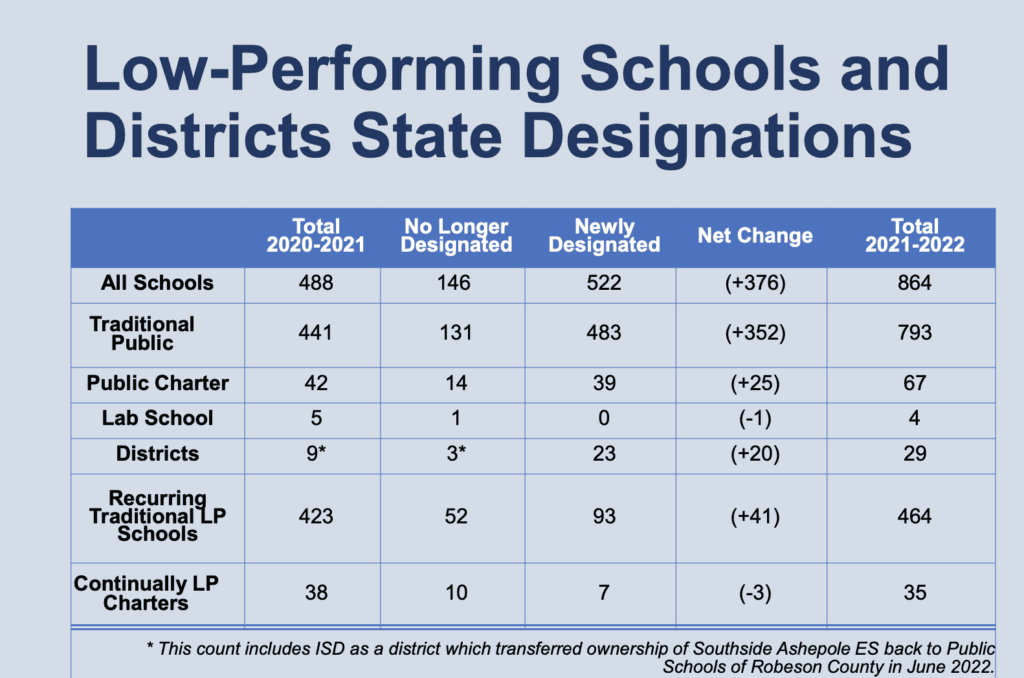
Below is a breakdown by region of the state.
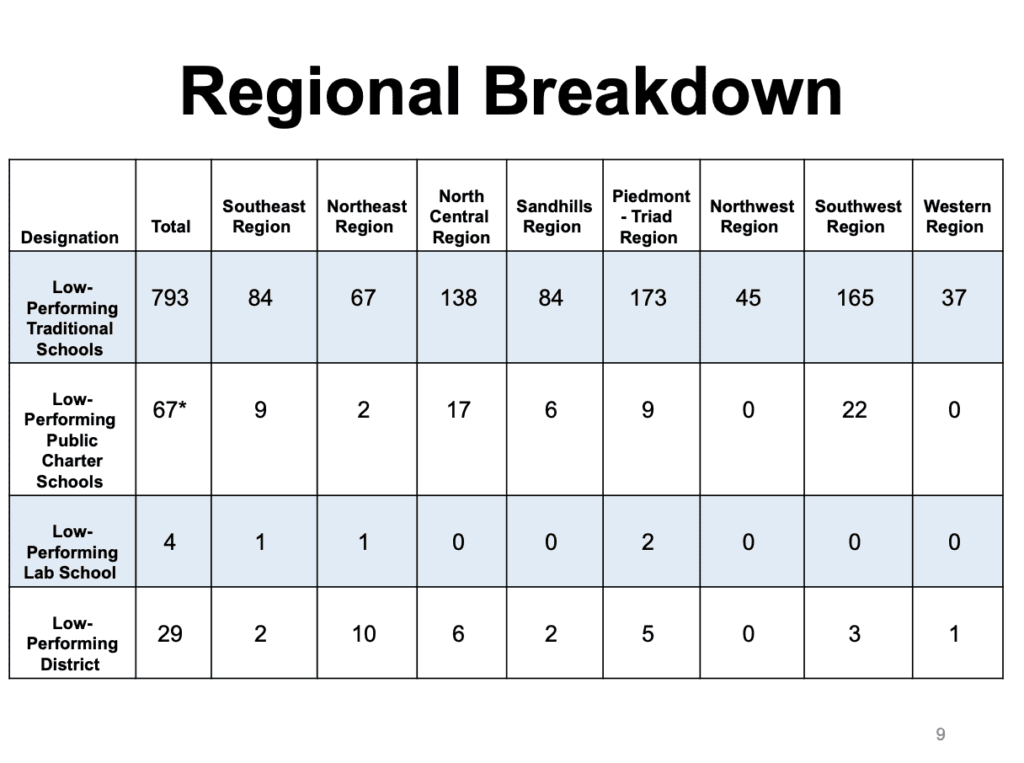
As part of the presentation, the Board also heard about the success of Restart schools in the state. These schools granted charter-like flexibility by the state.
In general, there were fewer low-performing Restart schools in 2021-22 than in 2020-21. At the same time, there was also an increase in the number of restart schools operating in the state.
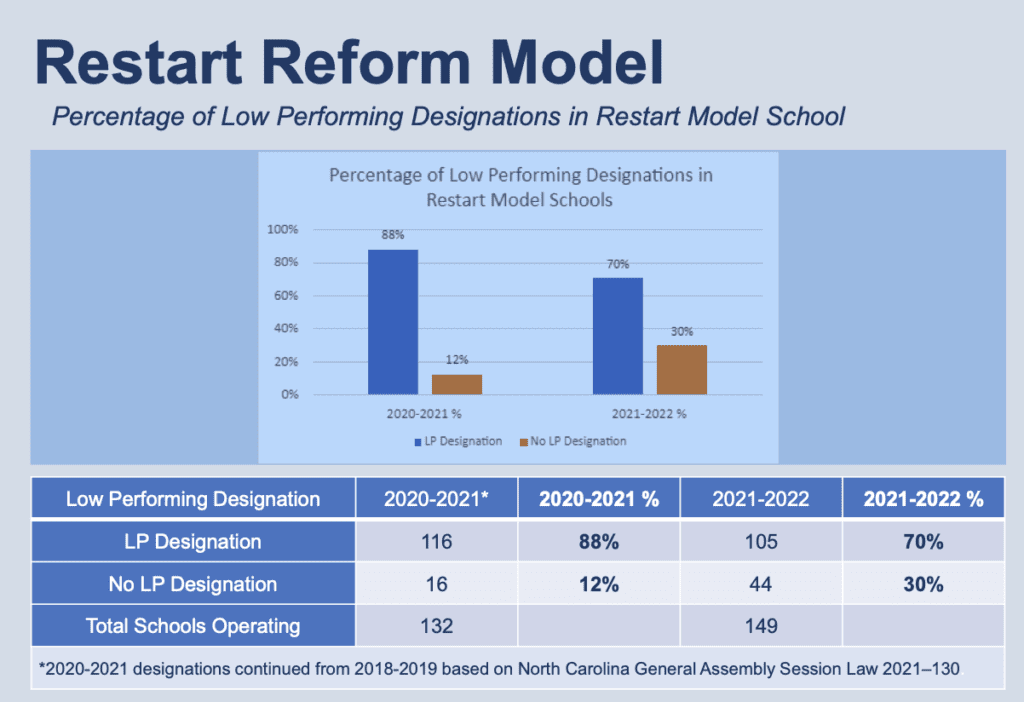
The Board also heard about how the CARES Intensive Intervention Pilot is doing with the 81 schools it works with.
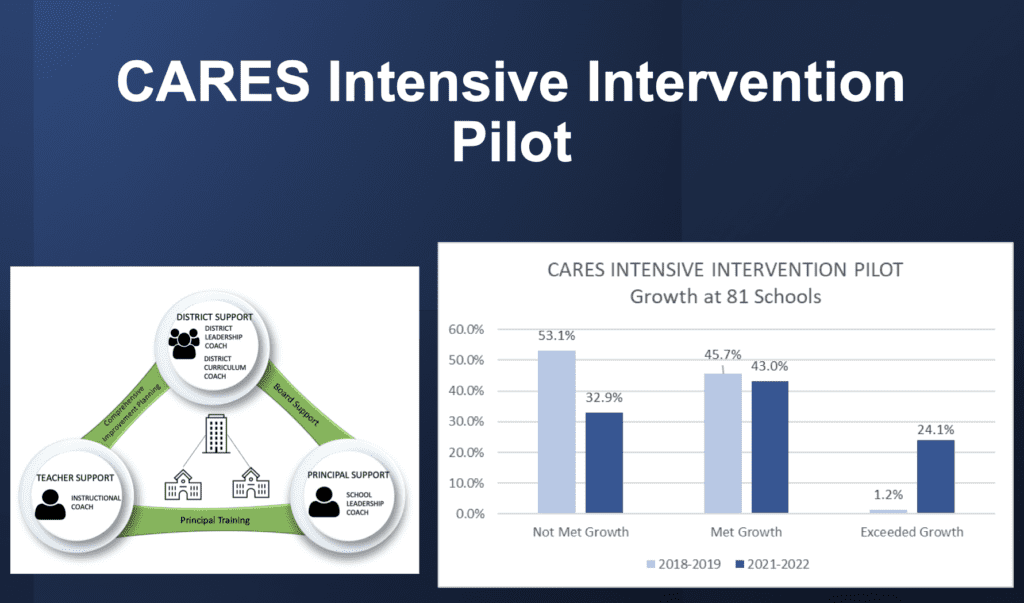
CARES is the highest, most intensive form of intervention given by the state to some of the schools that struggle the most. According to the presentation, the number of schools served by CARES will increase to 97 in 2022-23 “due to requests from Superintendents.”
See the full presentation here.
Hopeful results for economically disadvantaged students
On Thursday, members also heard a report on research from the Office of Learning Recovery and Acceleration that found that additional supports given to economically disadvantaged students during COVID-19 help mitigate learning loss.
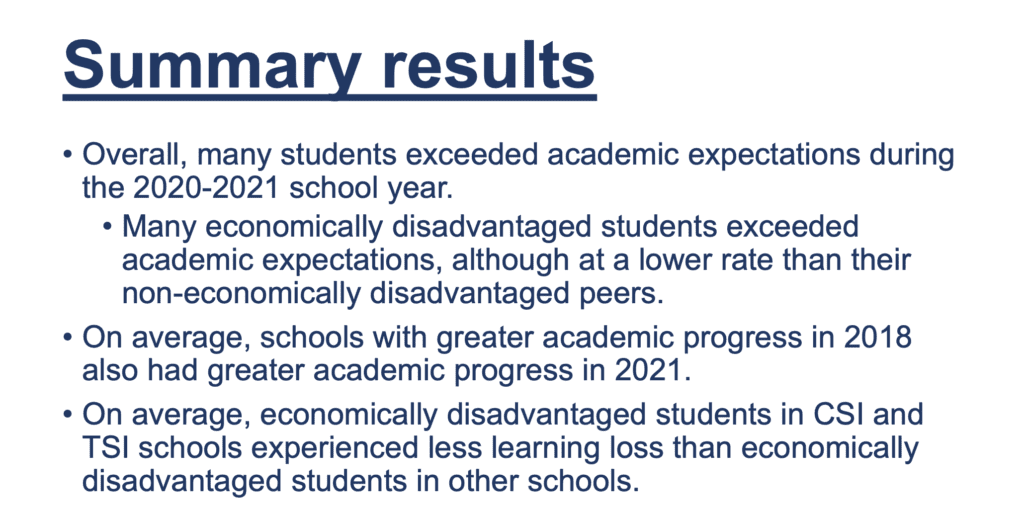
Access to advanced courses
Also on Thursday, the State Board of Education heard a presentation about a report to the General Assembly on broadening access and participation to advanced courses such as Advanced Placement (AP) classes.
North Carolina covers the cost of exams for advanced courses, spending almost $12.5 million in 2021-22 for AP, International Baccalaureate, and Advanced International Cambridge exams. The bulk of that — more than $11.5 million — went to AP exams.
In 2021, the number of students taking AP exams in the state went down 3.1% from 2021 to 22. During that same time, however, that number nationwide decreased 4.7%. Also, the number of passing scores on AP exams increased by 13.3% in the state.
The population of Black students taking AP exams went up 1.2% from 2021 to 2022. The number of Black students passing their exams went up 36.7%, compared to 35.2% nationwide.
The number of Hispanic students in North Carolina who passed their AP exams went up 24.7%, compared to 24.1% nationwide.
Advanced placement courses are the most common advanced classes in North Carolina.
See the full presentation here.
Editor’s note: EdNC’s Mebane Rash and Anna Pogarcic contributed reporting.
Recommended reading
